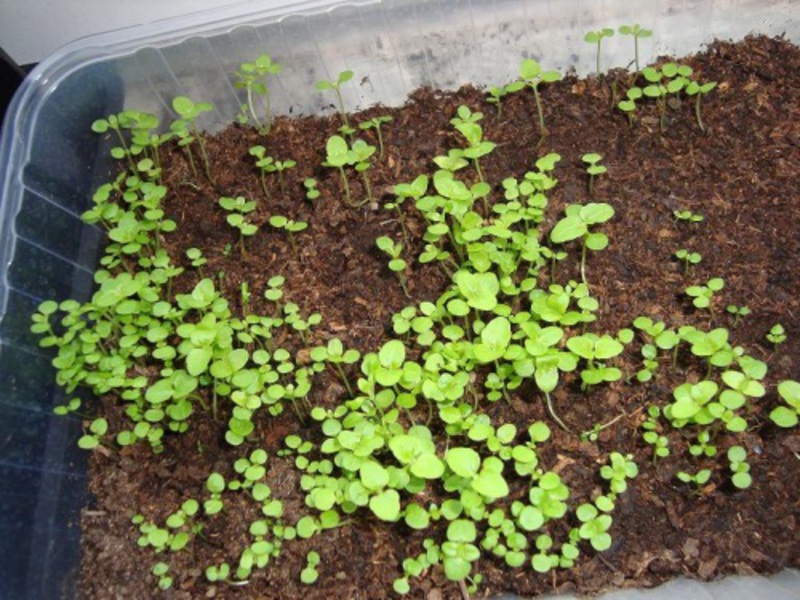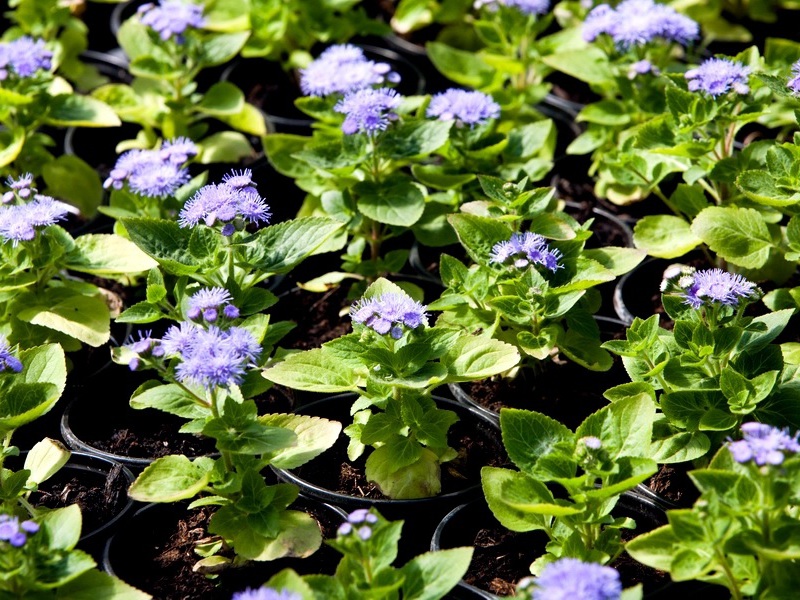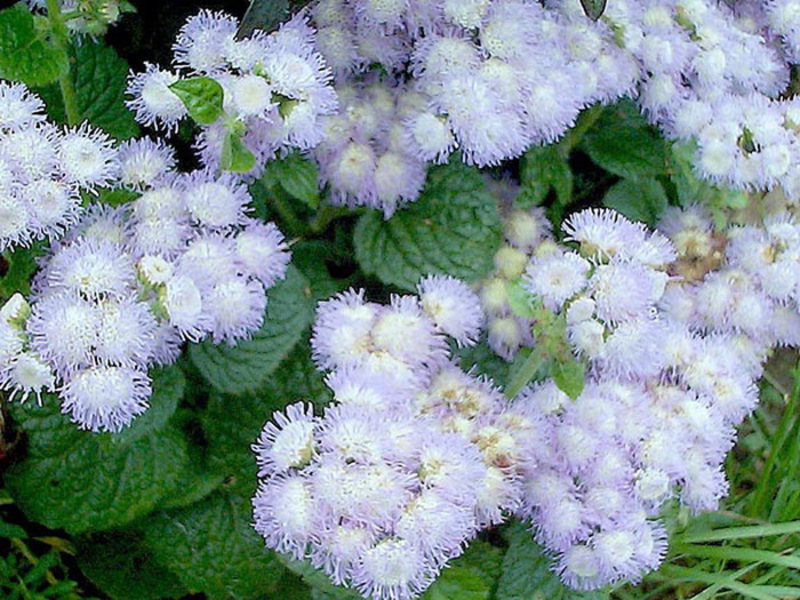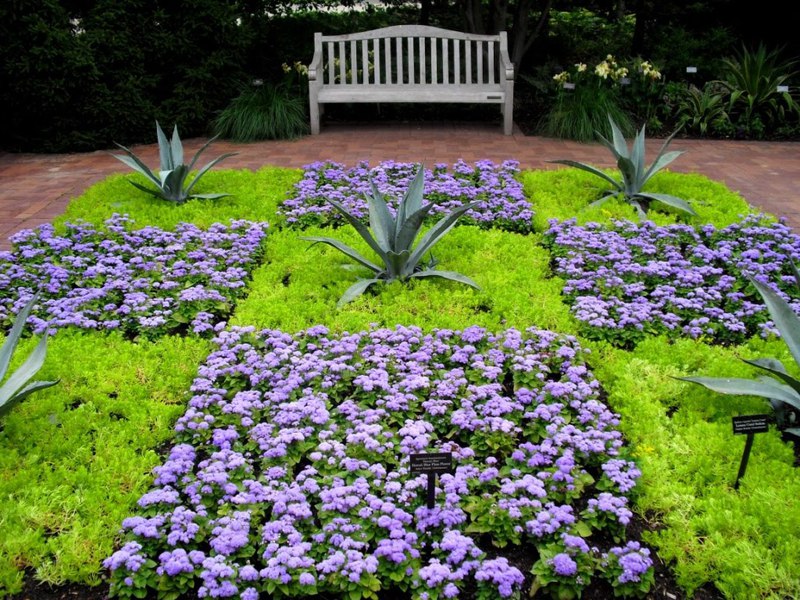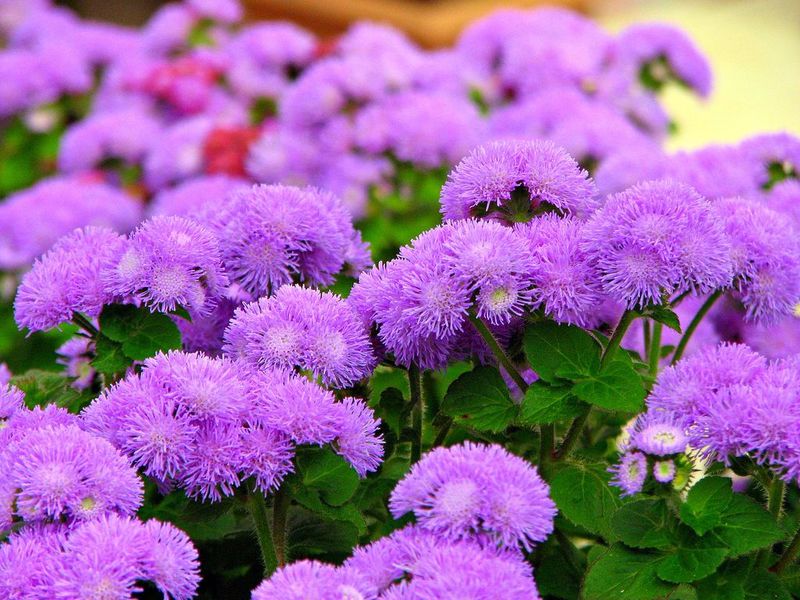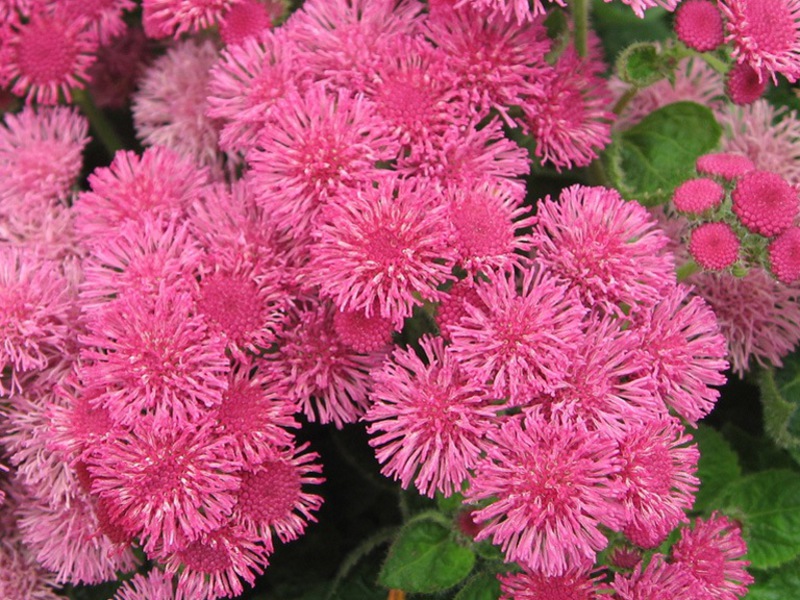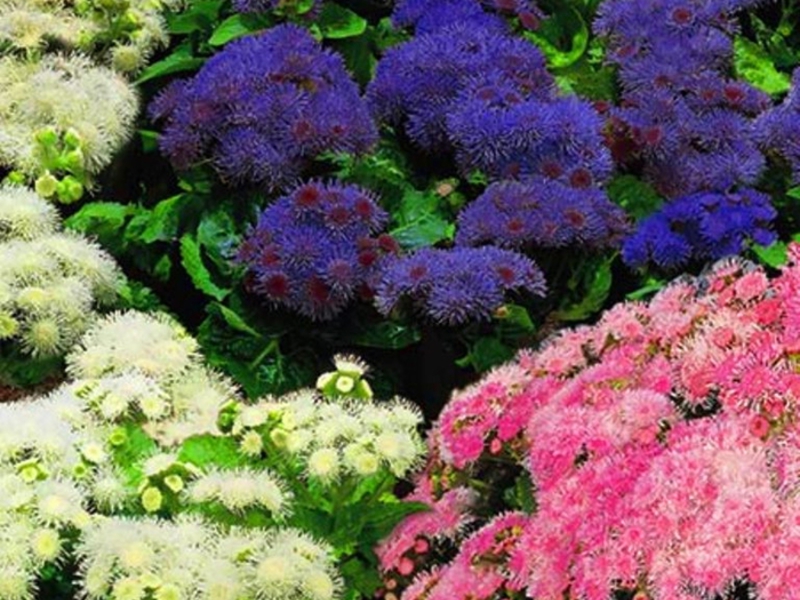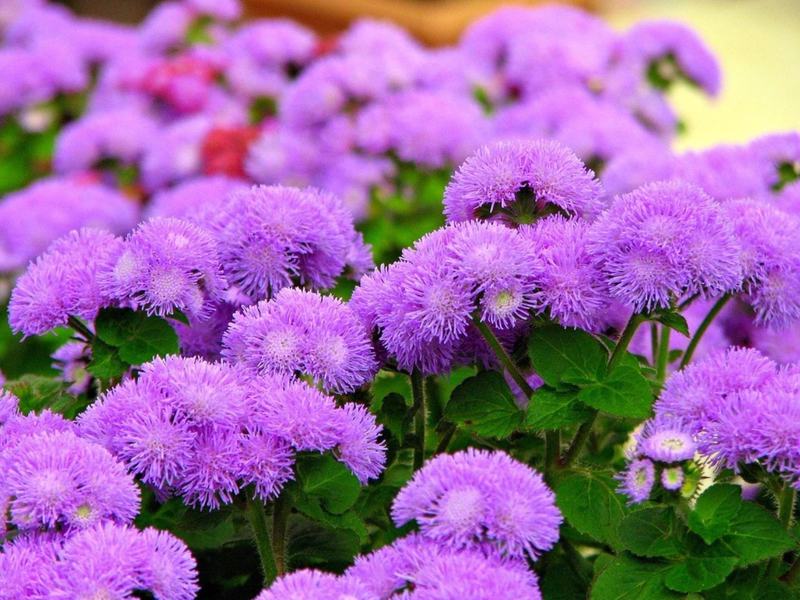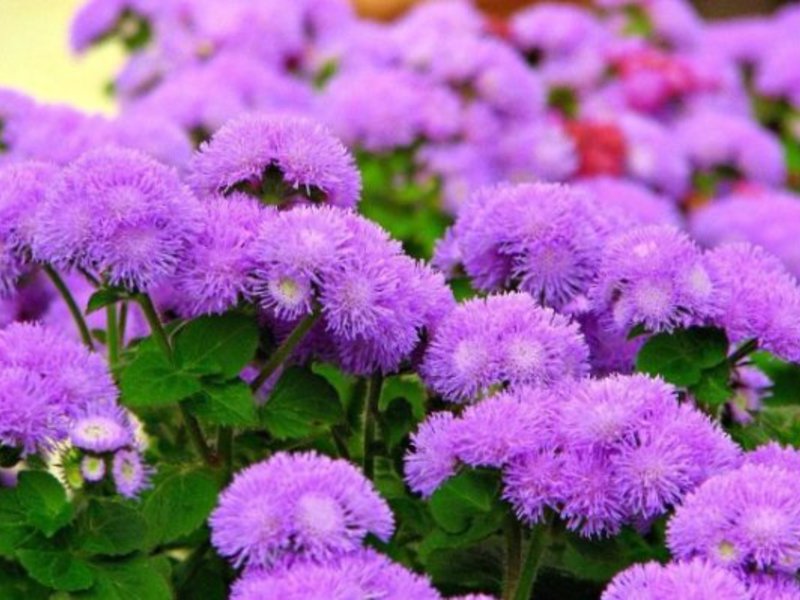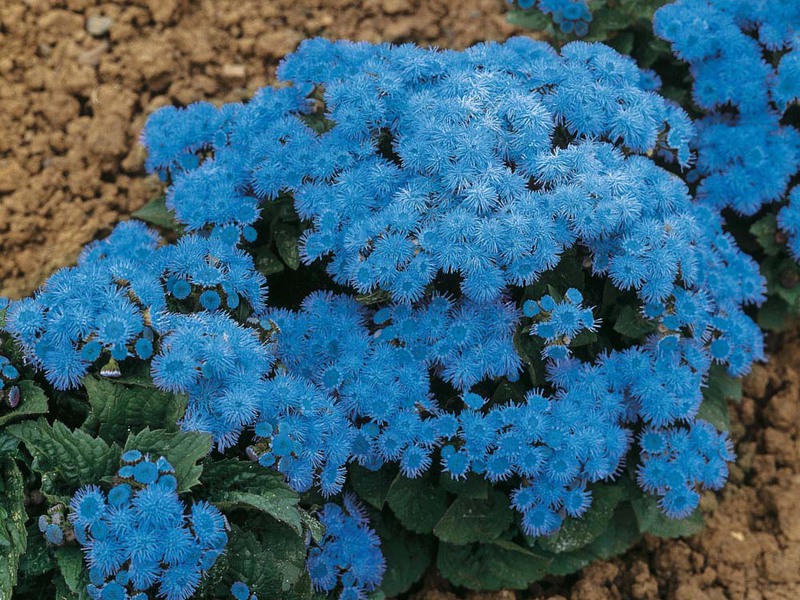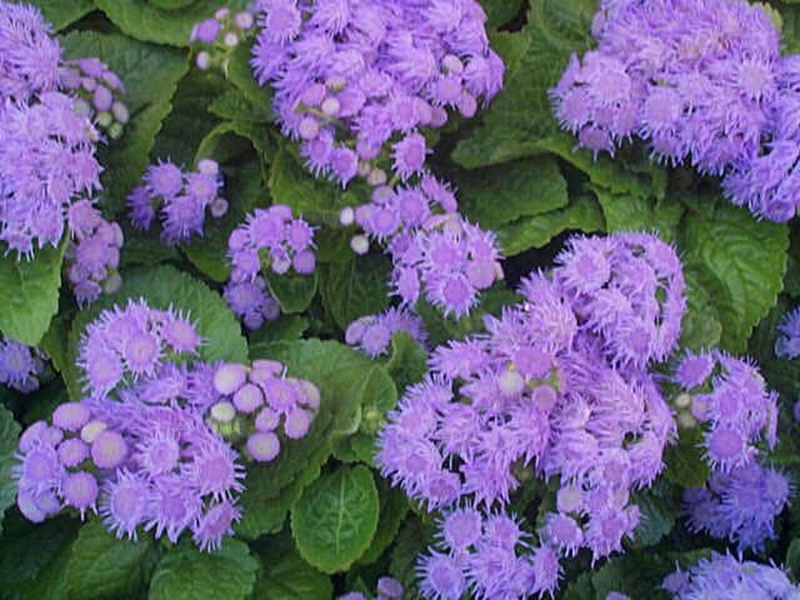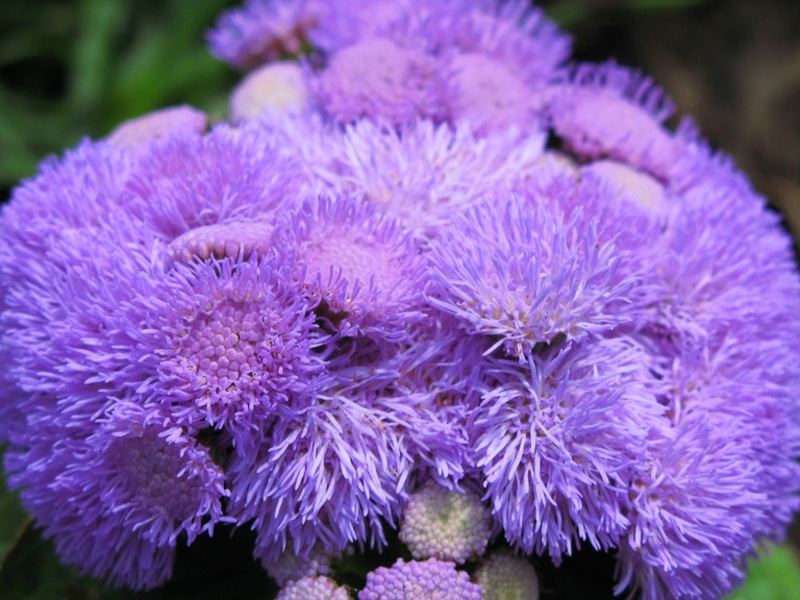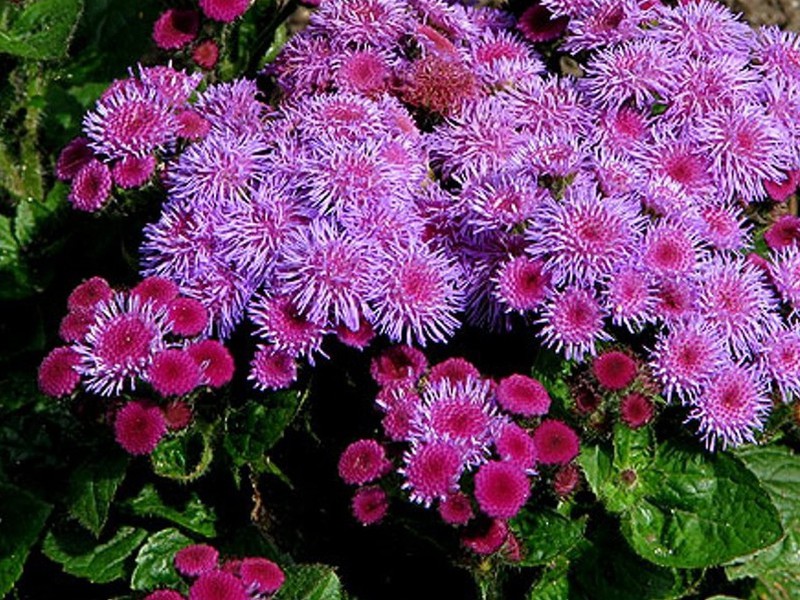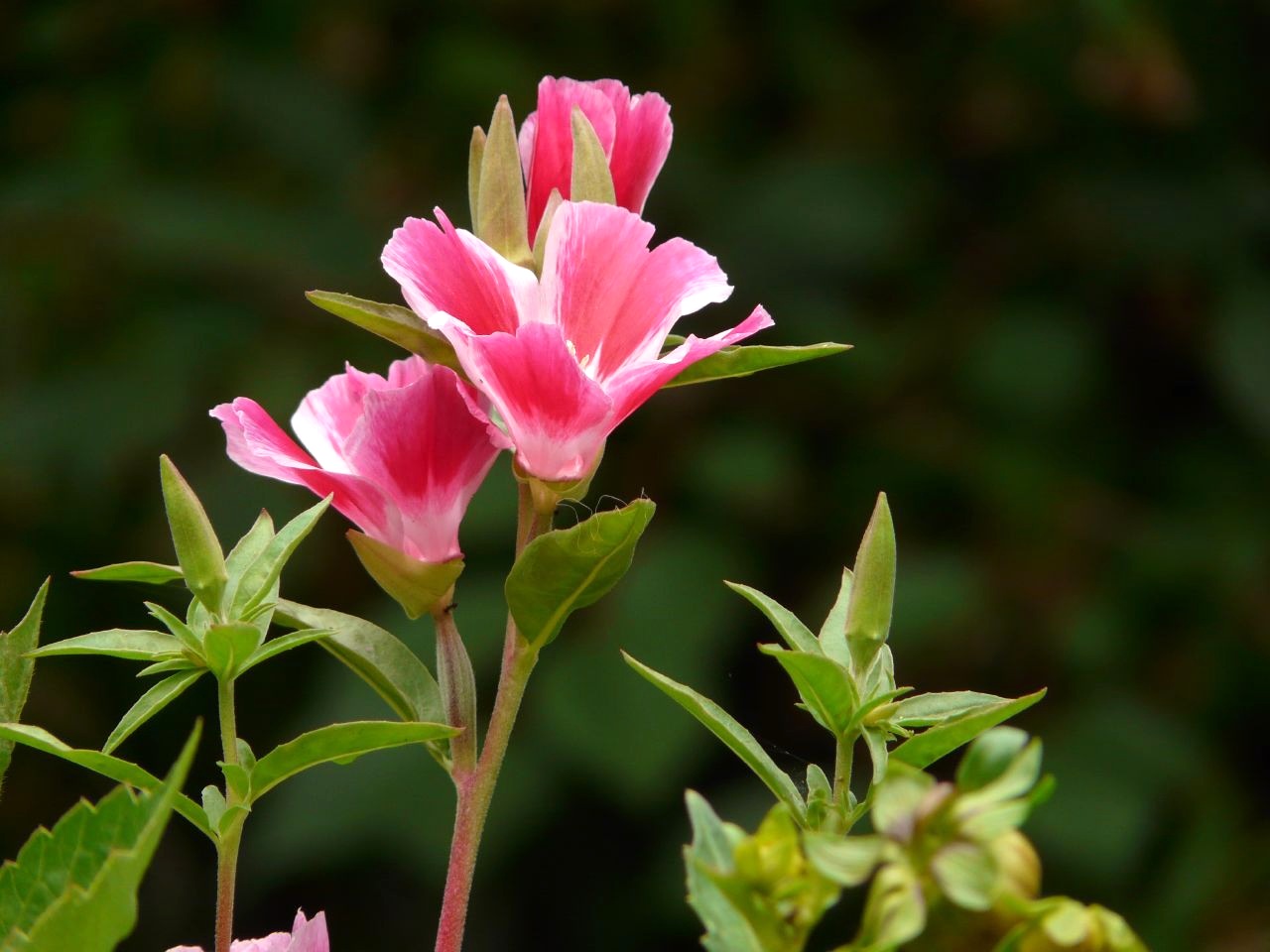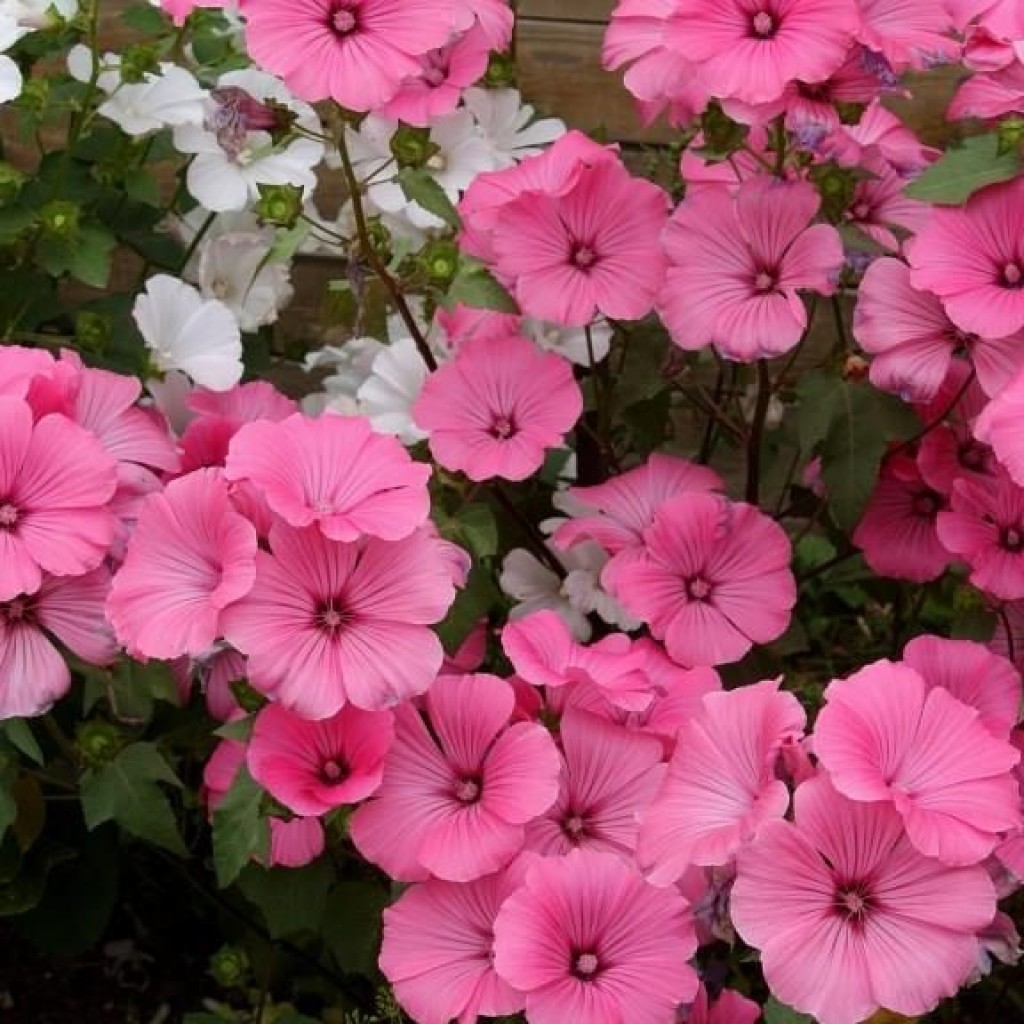Ageratum is an unusually beautiful plant of the Aster family. The name of the flower comes from the Latin word "ageratos", which translates as "ageless". This is the name of the plant because of its long flowering, which begins in June and lasts until the very frost. That is why gardeners call ageratum "long-flowered" and love to decorate plots, flower beds, lawns, front gardens with it.
Content
Ageratum flowers - photo, varieties
Depending on the variety, the height of the plant can be from 20 to 50 cm... In the photo you can see that the ageratum is a small bush with heart-shaped leaves and fluffy inflorescences. Its flowers can be white, pale pink, lavender blue, blue.
The opposite lower and middle leaves of the plant grow on petioles, while the next upper leaves are sessile. The bisexual fragrant flowers of ageratum are located on corymbose inflorescences and reach a diameter of one to one and a half centimeters. The fruit is a pentahedral wedge-shaped achene. Plant seed germination lasts for 3-4 years.
The plant has more than fifty species. The most popular and demanded by gardeners are only a few of them.
Ageratum blue
The plant got its name from the pale blue flowers, which, with their color and fluffiness look like mink fur... Therefore, the second name of this type of ageratum is "Blue mink". A low bush is entirely covered with rather large inflorescences, which can be from 5 to 8 cm in diameter.
Mexican Ageratum
The plant, which reaches a height of 10 to 50 cm, is distinguished by numerous erect, branched stems. Its leaves, rough and jagged along the edge, can be oval or rhombic. Small fragrant flowers of the plant are collected in inflorescences-baskets, which, in turn, are collected in complex corymbose inflorescences.
This kind of ageratum has many varieties, which differ in bush height, flowering time and color shades.
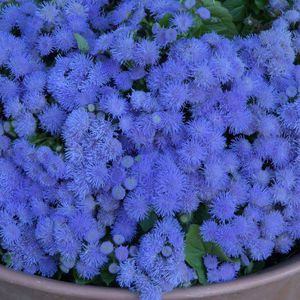 The Blue Mink variety is distinguished by weakly leafy, strong and thick shoots that grow up to 25-30 cm. This compact columnar bush is strewn with dense and large inflorescences up to 2.1 cm in diameter. Lilac-blue flowers, the plant of this variety blooms from mid-June to October.
The Blue Mink variety is distinguished by weakly leafy, strong and thick shoots that grow up to 25-30 cm. This compact columnar bush is strewn with dense and large inflorescences up to 2.1 cm in diameter. Lilac-blue flowers, the plant of this variety blooms from mid-June to October.- Ageratum "Blaustenchen" is a compact bush, whose height is only about 15 cm. Its thin dark green shoots are covered with a purple bloom and densely pubescent. Loose and few-flowered inflorescences are covered with blue flowers with a lilac tint. The plant is demanding for watering. It begins to bloom in early June.
- The Blau Kappé variety begins to bloom only at the end of June, so it is considered late. Hemispherical compact bush grows up to 20-30 cm. Loose inflorescences with a diameter of 5-6 cm are distinguished by a lilac-blue tint and short stigmas.
- Ageratum "Alba" is a spherical, compact bush about 20 cm high, on which dense white inflorescences are located.
Reproduction of ageratum at home
There are two ways to propagate a plant:
- seeds;
- cuttings.
Seed reproduction
Most often, ageratum is grown from seeds. One mature fruit of the plant contains up to six thousand seeds, which can be collected and stored for several years. Landing is carried out in the second half of March.
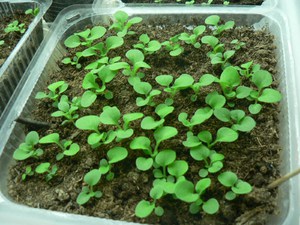 The seedling boxes are filled with a potting mix of humus, peat and sand (1: 1: 1).
The seedling boxes are filled with a potting mix of humus, peat and sand (1: 1: 1).- Ageratum seeds are very small, so they are sown on the surface of moistened soil, and sprinkled with soil only a little on top.
- From above, the boxes are covered with glass or polyethylene.
- Greenhouses are placed in a warm place and ventilated daily.
- It is necessary to ensure that the soil is moist all the time. Therefore, if necessary, sprinkle it with water at room temperature.
In about 10-14 days the first shoots should appear... After that, the glass or film can be removed, and the boxes can be placed in a well-lit place. Direct sunlight should not fall on the seedlings. Seedling care consists in timely watering with settled water.
When two real leaves appear, you need to plant the sprouts, increasing the distance between them. After about two weeks, the mature and grown young bushes are planted in separate pots. At home, seedlings are watered only in the morning. The soil should always be slightly moist, and the air around the sprouts should be dry.
Two weeks before planting seedlings in open ground, young plants need to be "hardened". For this, cups with sprouts are taken out into the open air in warm weather.
Cuttings
It is much easier and faster to grow ageratum from cuttings. On the branches of the plant, many young shoots with buds are formed, which must be cut off for reproduction. This breeding method is very convenient because annual plant, and messing with seeds is not always possible.
Growing ageratum from cuttings and planting them has its own characteristics:
- Before freezing, the best plant bushes are dug up and transplanted into large containers.
- Flowers in pots are brought into a warm room, and are grown at home until March. Ageratum will also feel good on the insulated loggia.
- In March, you will need to cut the cuttings or dig up the mother liquors.
- Cuttings are planted in containers with an earthen mixture or in a greenhouse, and covered with plastic bags or jars. The buds germinate at a temperature of at least 20C.
In this way, it is recommended to propagate and grow hybrid varieties of ageratum. This is due to the fact that their seeds usually do not germinate.
Ageratum: planting and care in the open field
After the frost is over, the grown seedlings or sprouted cuttings can be planted in open ground.
Features of planting ageratum
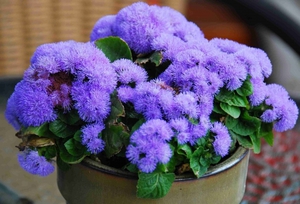 The plant loves sunny places and well-drained soil with moderate moisture. Ageratum will grow and bloom well on sub-sandy and loamy soils. It is not recommended to plant a flower in soil oversaturated with organic matter from the garden. Young cuttings are best planted in a greenhouse in a mixture of sand and earth.
The plant loves sunny places and well-drained soil with moderate moisture. Ageratum will grow and bloom well on sub-sandy and loamy soils. It is not recommended to plant a flower in soil oversaturated with organic matter from the garden. Young cuttings are best planted in a greenhouse in a mixture of sand and earth.
For young plants, a site is prepared, and holes are dug:
- the distance between low bushes should be up to 10 cm;
- high-grade bushes should be planted at a distance of at least 25 cm from each other.
If the soil on the site is prone to moisture stagnation, then drainage and peat crumb need to be poured into the holes. Seedlings are planted in holes at the same depth as they grew in pots.
Outdoor Ageratum Care
Growing ageratum is not at all difficult, but still some subtleties when leaving for it you need to consider:
- The plant requires regular watering. Since it has a powerful root system, the flower tolerates a lack of moisture easily.The water around the ageratum should not stagnate, otherwise its roots may begin to rot. The plant is watered strictly at the root. It is advisable that the water does not get on the leaves and flowers. It is recommended to cover the bushes during rains.
- After watering, the soil around the plant must be weeded and loosened.
- Once every three weeks, ageratum needs to be fed with mineral and organic fertilizers. In this case, the concentration of solutions should be half that indicated in the instructions. With abundant feeding, the bush will grow foliage and bloom poorly. For the same reason, you cannot feed the plant with fresh manure.
- An effective way to prolong the bloom of the ageratum is a haircut. It is imperative to cut the plant if the seedlings start to grow too quickly or are stretched out. For the plant to bush, you need to cut off the tops of the shoots. Ageratum will begin to grow rapidly and bloom luxuriantly if only a few internodes remain on the stem after cutting.
Ageratum diseases and pests
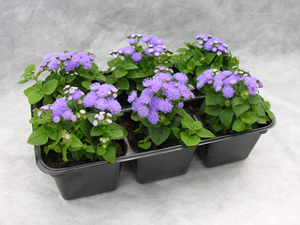 The plant is very susceptible to diseases, therefore, when growing it, you must follow all the rules for care.
The plant is very susceptible to diseases, therefore, when growing it, you must follow all the rules for care.
Root rot affects bushes that grow on poorly drained soils. It is almost impossible to save rotten roots, so you need to take preventive measures.
Cucumber mosaic virus appears as white and yellow spots on the leaves. A diseased plant lures aphids to itself, which multiplies rapidly. The affected bushes must be removed.
Young plants must be protected from pests. If they appear, the bushes are processed insecticidal preparations.
Ageratum, due to the varied color of flowers, will look great on a flower bed without admixtures of other plants. But in order for flowering to continue until the very frost, you need to know all the features of its cultivation, and properly care for it.
